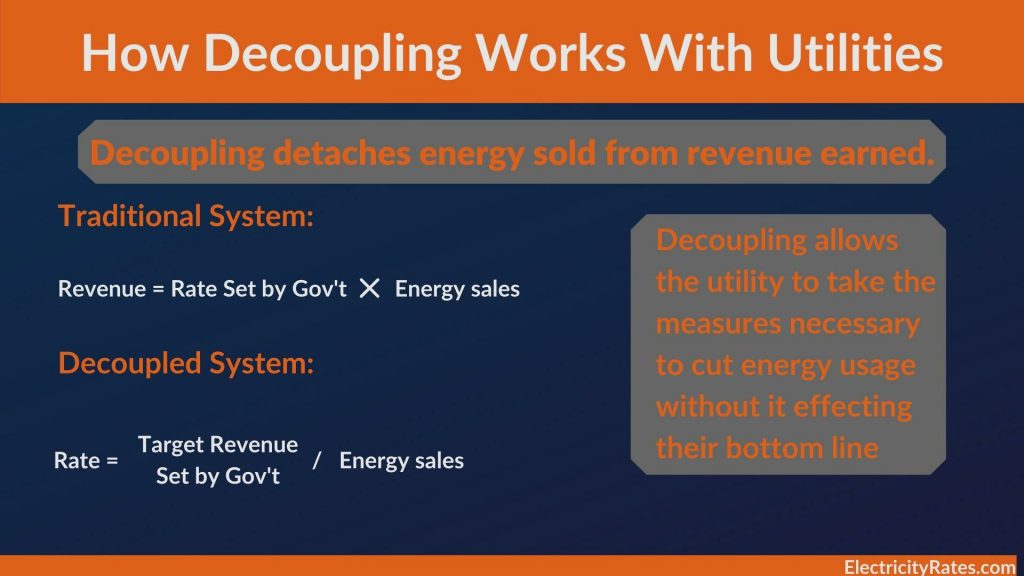The browser you are using is not supported. Please consider using a modern browser.

What Is Rate Decoupling With Utilities

Climate change is a hot topic right now and
there are many states that are passing laws in an effort to lower their carbon
footprint.
One of the ways that they do that is through
measures to cut total energy usage. This sounds fine in theory. In fact, many
of us probably agree with the measures taken by these states.
But in reality, it is a little more
complicated than that.
This is because you are essentially asking
utility companies to make less money, without any compensation for their own
expenses to keep the grid running. There is a disincentive for them to
contribute to energy cuts.
This is
where decoupling comes into play.
What is Decoupling?
Decoupling detaches the amount of energy sold
from the number of revenue utilities make.
It works like this.

In a traditional system, the rate is set by the government. The only way for utilities to
make more money is by selling more energy.
In a decoupled system, the revenue is set by the
government. The rate is then changed frequently based on the amount of energy
people are using to hit that target revenue. This allows utility companies to
take the measures necessary to decrease electricity usage because they will be
making the same amount of money either way.
According to the C2ES, the target revenue is
set by a “test year using traditional regulatory methods.” In other words, they
are trying to make sure they have enough money to keep utility operations
running smoothly.
How Does Decoupling Effect The
Consumer?
This is the main argument against decoupling.
They say that it puts all the pressure on the consumers to cut energy and
increases their rates. There are even some arguments that say utility revenues
are set too high and therefore profit when they should not be.
However, there are some strong arguments for decoupling. According to the Alliance to Save Energy, the burden that is placed on the consumer is minimal. Increases in utility rates are within 3% of the original retail price 80% of the time. In fact, in Michigan, it is expected to “yield lifetime energy savings to customers worth $709 million.”
On top of this, decoupling ensures that
utility companies have the funds available to deliver energy reliably and takes
away that disincentive, so they can help cut back on energy usage.
If the goal is to reduce energy usage,
decoupling may be a necessary first step.
